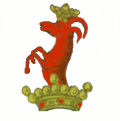
 |
Christopher C. Barnekov, PhD
Recently the U.S. government (the State) has been encroaching on many areas formerly reserved to the Church. Scandinavia is a horrifying illustration of the results of State domination of the Church. Americans can gain a real appreciation of the blessings our First Amendment has protected by studying what has happened in Scandinavia over the past century. In this brief note, I focus mainly on Sweden, but the story is very similar in each Scandinavian country.
When the Founders proposed the First Amendment, barring both establishment of a State Church and also prohibition of the Free Exercise of Religion, they were reacting to their immediately previous experience. The British King was “supreme head of the Church of England” with “full power and authority … to visit, repress, redress, record, order, correct, restrain and amend” any and all aspects of the Church.1
 |
Vittskövle (Widtsköfle) Castle, completed 1552 by my 11th-great grandfather, Jens Axelsson Brahe (photo is of the reflection in the moat). |
The same situation obtained in Scandinavia after the Reformation: the king became ruler of the Church, a drastic change from pre-Reformation experience. Although some kings were devout, sincere Lutherans who reformed and strengthened the Church, others seized Church treasure and property to fund their armies.
Perhaps more significantly, kings gradually learned that they could use the network of parish pastors as, in effect, agents to do their bidding. Pastors were tasked, among other things, with maintaining population records for taxation, military conscription, migration control … increasingly, they were seen as government agents (this drove a wedge between pastors and their people).
Sometimes there were good effects, at least for a time. When the king decided to introduce universal education, parish pastors were made the local school superintendants. For a long time, almost every school in Sweden was a Lutheran parochial school. The Small Catechism was a central element in the curriculum. This happy arrangement, however, paved the way for utter disaster.
 |
Vittskövle Church, built in the 12th Century. My ancestors worshiped here from at least the 1300s, and are buried in and about the church. |
From the Reformation on, the kings controlled the selection of bishops and controlled theological faculties. As the centralized State grew, and kings ceded power increasingly to the parliament (Riksdag), this function was eventually assumed by a Minister for Church Affairs in the government’s cabinet.
About a century ago, the socialist party captured control of Sweden's government. Suddenly the bishops were selected by a Minister for Church Affairs who was an avowed atheist. He (sometimes she) also controlled the schools of theology. Scandinavian socialists are more subtle and more patient than the Soviets. When a new bishop was to be appointed, clergy (and later lay delegates)voted. The three candidates with the most votes were submitted to the government. The socialists consistently chose the candidate with the most ‘liberal’ view of Scripture (the selection of Bo Giertz was a government miscalculation). Likewise, theological faculty with more liberal views of the authority of Scripture were preferred. Gradually, the Church’s faith and doctrine were undermined. After nearly a century of this, the State Churches of Scandinavia are simply apostate – although with a small, shrinking, believing remnant.
 |
Vittskövle Church interior, with kalkmålningar depicting Creation and Salvation. Literally, a whitewashed tomb full of dead men's bones. In the Barnekow gravechamber behind the iron railing visible to the right of the pulpit lie caskets containing the mortal remains of many of my ancestors — far outnumbering the few worshipers who attend a typical service. |
Today those churches are, by and large, empty. Scandinavia was once vibrantly Lutheran, but today is the most secularized region of the Western world. The State Churches are LINO: Lutheran in Name Only. For that matter, they are also CINO!
In Sweden, after destroying the Church from within and without, the State discarded it in 2000. The Church of Sweden was formally “disestablished,” removing the several advantages it had enjoyed as a State Church. However, it was not freed. Instead it was turned over to direct rule by the political parties. Parliamentary political parties nominate slates of candidates for all Church offices. Voters vote for a party rather than for an individual. Those who do not attend worship are also encouraged to vote by their political party leaders, who view the Church as a tool for “fundamentally transforming” men and society. The other Scandinavian States are rapidly moving toward the same arrangement: a purely politicized, liberal, and empty Church where only faint echoes of the Gospel are sometimes heard — though it still permeates the liturgy and many of the hymns (both of which are gradually being replaced with more politically correct substitutes).
This is what can happen without the protections of a First Amendment. This is what it means to say “separation of Church and State is primarily to protect the Church from the State.”
[The assault on the Churches of Scandinavia was multi-pronged. I describe here only one of the direct State control prongs. A somewhat broader overview, an 18 minute narration covering a millennium of Scandinavian church history from the perspective of my family (who were intimately involved at each stage), is here.]
 |
1The Act of Supremacy of November 1534 (26 Hen. VIII c. 1) |
Christopher C. Barnekov, PhD
Scandinavia House